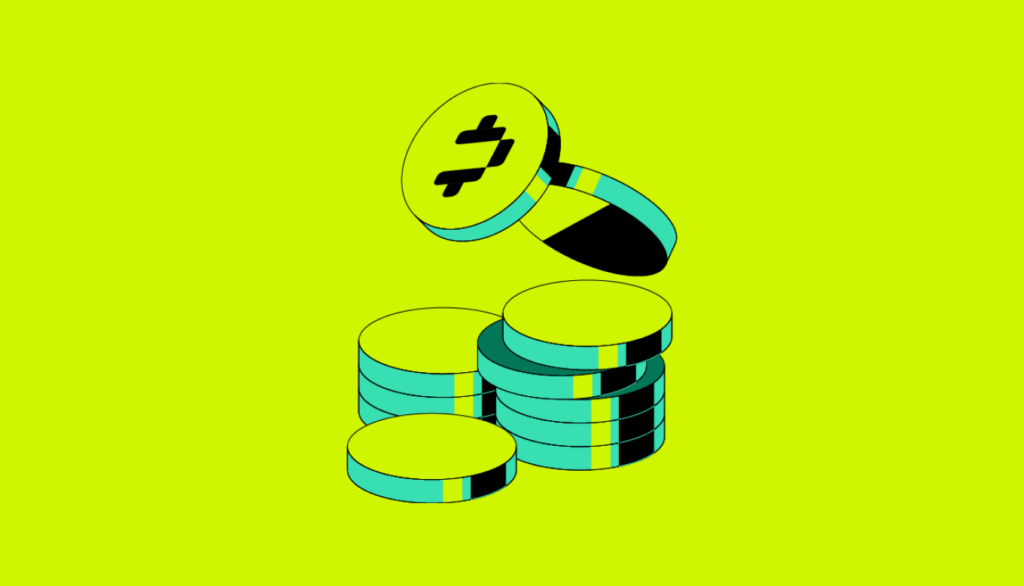It’s time we put the spotlight on the technology that fuels the 4th industrial revolution. Blockchain is making crypto, NFTs and Web3 possible, and the list does not stop here. The adoption of this technology is bound to skyrocket, entering more and more industries and verticals as well as personal use.
To have an idea of what is going to happen next, it helps to take a look at the dot.com boom from 2 decades ago. In 2005, there were about 20% internet users in the world. Today, that number is around 85%. Web1 and Web2 subsequently became a natural part of our lives and it’s now hard to imagine the world without the internet. Innovation doesn’t stop though, and now blockchain and Web3 are offering us a more holistic experience.
What Is Blockchain?
Simply put, blockchain technology mainly consists of a decentralized peer-to-peer network of computers capable of processing and encrypting immutable blocks of data. Our world runs on information. Data is the new oil. Blockchain is the ideal technology for processing and delivering information because it provides speed, security and transparency. A blockchain network can be used to track orders, payments, production, supply chain, royalties and many more.
One of the best use cases of blockchain is definitely cryptography – the technology that brought us cryptocurrencies and NFTs. Moreover, the entire decentralized finance system would not be possible without blockchain networks. In this realm, blockchain solves the important problem of double spending. With all cryptocurrency being purely digital, the blockchain encryption ensures that coins and tokens are not easily duplicated.
More and more companies are using distributed ledger technology to advance their operations. But building on blockchain is a difficult task that not a lot of companies can handle. Smaller institutions and individuals face even bigger challenges if venturing on their own. A good way of integrating the technology is to partner with companies that can help with customized solutions.
Types of Blockchain
A study from Gartner is revealing that approx 60% of enterprises are looking into deploying blockchain technology. A number that reveals a fast-expanding global adoption. Currently, there are 4 types of blockchain, each with different use cases:
Public Blockchain
The first type of DLT (distributed ledger technology) that is used for Bitcoin, among others. Instead of storing information in one place only, DLT technology is distributing it across the entire network. Security and authentication are ensured by the consensus algorithm of PoW (Proof-of-Work) and/or PoS (Proof-of-Stake) – more on this later. An important thing about this type of blockchain is that it is completely transparent and independent. As stated above, the best known example is Bitcoin itself. Another one, with a similarly significant role in decentralized technology, is Ethereum – host to so many other dApps.
Private Blockchain
You can think of private blockchains as some kind of intranet. It works in an isolated environment like a closed network and it is under the control of a single company. Generally, this type of blockchain operates on a smaller scale, while still delivering all the good things of DLT.
Hybrid Blockchain
When organizations need the best of both worlds, they opt for hybrid blockchains. This allows for both a private, permission-based and a public permissionless system. Confidential information is kept inside the network but is still verifiable. Even though a private entity may own the hybrid blockchain, it cannot alter transactions.
Consortium Blockchain
With consortium blockchains, multiple organizations can collaborate on a decentralized network. Essentially, it is a private blockchain with limited access to a particular group only. This model eliminates the risks that come with just one entity controlling the network on a private blockchain.
How Are Blockchain Networks Secured?
In order to maintain proper operation, various blockchain networks utilize different consensus models. Two of the most used are PoW (Proof-of-Work) and PoS (Proof-of-Stake).
PoW (Proof-of-Work)
PoW is a mechanism used to regulate the creation of blocks and the state of the blockchain. How does it work? With PoW consensus models, miners (meaning nodes in the network) make trillions of mathematical guesses in order to validate one single block. The result is randomly attributed to a specific miner or group of miners. The perfect randomness of this process makes it virtually impossible for anybody to hack or alter the procedure.
PoS (Proof-of-Stake)
As an alternative to the PoW system, the Proof-of-Stake involves stakers (the PoS equivalent of miners) who lock up funds in a special smart contract. When a new block is created, the algorithm randomly selects a staker with the task of publishing the next block. The chances of being selected by the algorithm are directly proportional to the number of funds you are staking.
PoH (Proof-of-History)
Particular to the Solana blockchain, the PoH is a unique consensus mechanism that is very fast and extremely accurate in timing transactions. Since its inception, the innovative PoH tech has propelled Solana amongst top global networks. The chain provides a clear, verifiable sequence of transactions that a validator adds to a block, without the need for a conventional timestamp.
It is worth mentioning that the PoS method is much less energy consuming, therefore more sustainable and eco-friendly than PoW. Also, there are other consensus models available that some blockchain networks utilize.
Building on Blockchain
Today, more and more companies are adopting blockchain technology in their business. But how hard is it to build blockchains and integrate decentralized networks so that you can benefit?
Simply put, building blockchains is no easy feat. Tech giants might have the resources to build their own decentralized networks, and most of them already do. For smaller companies and individuals however, a more suitable way is to partner with institutions like Unique.vc, who can provide a customized integration according to specific needs. This allows for fast deployment and efficient operations, while taking away the headaches of running the network.
Putting innovation at the forefront, Unique.vc is led by a great team of developers and engineers. Spearheading the technology advancement is CTO Uroš Šošević, also a PhD in Organizational Sciences, University of Belgrade. Check out this interview with Uroš, for a deeper insight into the software framework design at Unique Venture Clubs. The continuous innovation and research is allowing Unique.vc to offer their partners simple and fast access to the Solana blockchain and Web3.
If you want to add more interoperability and interconnectivity to your business, get in touch with Unique.vc. Recently, the Solana-based dApp built a custom investment platform for MonkeVentures, showcasing it at Lisbon Solana Hacker House. The partnership helps MonkeVentures’ on-chain investment syndicate, adding efficiency and transparency to the process. Moreover, the customized features allow the Monkes to manage and monitor all their investment activities from a single platform.
Blockchain is not a “one size fits all” business. Various companies have different needs and goals, according to their vision, objective, and company size. Therefore, building on the blockchain requires smart partners that can deploy integrated solutions that cover all your needs. Unique Venture Clubs offers custom solutions for web3 investors and founders to make the most out of blockchain technology. Get in touch with our team and we’ll create a unique experience for your on-chain entity.




